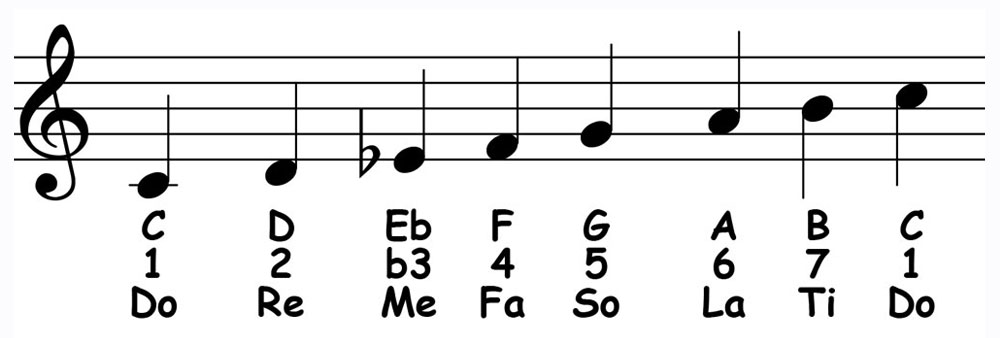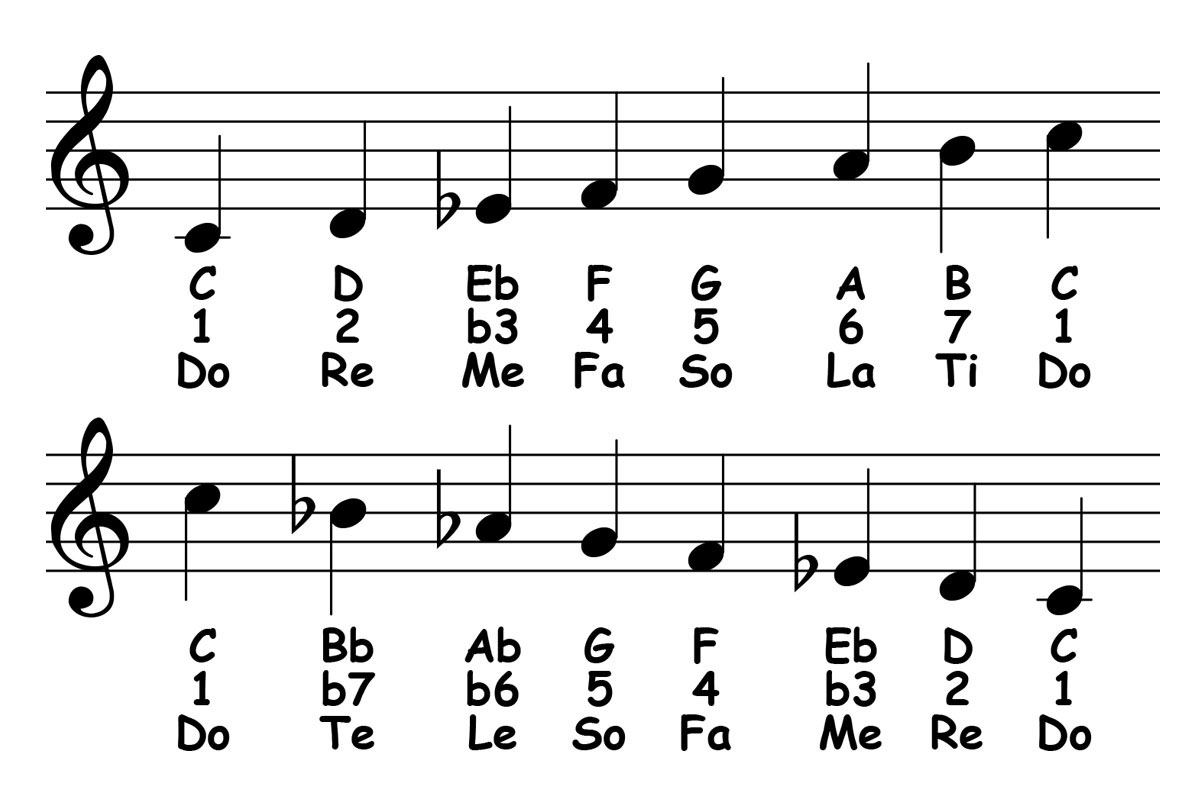The Melodic Minor Scale is unique among scales because some of the notes change depending on whether you are going up or down the scale…
C Melodic Minor Scale Theory
The melodic minor scale is no more “melodic” than other minor scales. So, don’t get hung up on the name. What matters is this: In some musical contexts, the melodic line sounds better when you play La and Ti going up and Le and Te going down.
Ascending Melodic Minor
Notice that 6 (La) and 7 (Ti) are the exact same notes as the C major scale.


- The scale structure of the Ascending Melodic Minor Scale is 1-2-b3-4-5-6-7. Always. No matter what key you are in.
- The Solfege syllables of the Ascending Melodic Minor Scale are Do-Re-Me-Fa-So-La-Ti-Do. Always. No matter what key you are in.
- The only thing that changes when you change keys are the letter names.
Descending Melodic Minor
Notice that this is identical to the C natural minor scale.


- The scale structure of the Descending Melodic Minor Scale is 1-b7-b6-5-4-b3-2-1. Always. No matter what key you are in.
- The Solfege syllables of the Descending Melodic Minor Scale are Do-Te-Le-So- Fa-Me-Re-Do. Always. No matter what key you are in.
- The only thing that changes when you change keys are the letter names.
Melodic Minor Scale Solfege Ear Training
Reading, playing, and singing the Solfege Syllables out loud is an extremely effective way to tune up your ears and to internalize the unique sound-feeling of each note in the scale with respect to the key center Do. Make sure to do this slowly enough for the unique sound-feeling of each Solfege Syllable to make a meaningful impression on your mind’s ear.
C Melodic Minor Scale: Linear, Ascending…

C Melodic Minor Scale: Linear, Descending…

C Melodic Minor Scale: Do-X-Do, Ascending…

C Melodic Minor Scale: Do-X-Do, Descending…

Note: While it’s possible to continue by singing a bunch of other musical patterns, the 80-20 Principle teaches us that a more efficient approach is to get your ear training material directly from the music that YOU want to play!
learn more…
Harmonic Minor Scale: Theory & Ear Training

Leave a Reply